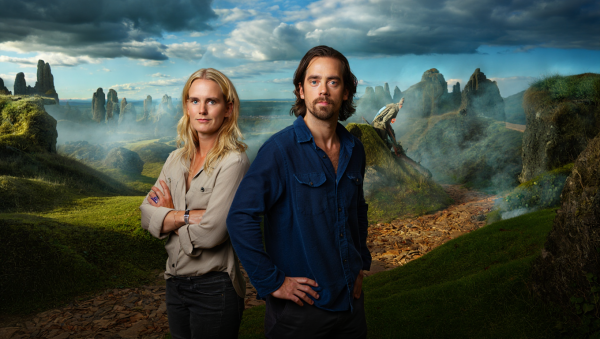
The Abyss of Opportunity
May 17, 2025
Markets are not rational. They never were. They never will be. If you’ve walked into this essay expecting a list of hot stocks for 2025 wrapped in tidy explanations and comfortable predictions, you’ve already missed the point. The very act of chasing comfort is what ensures mediocrity. Let me start with a warning: the greatest danger to your portfolio is not the market—it’s you. Fear, greed, hesitation, and hubris: these are the black holes that collapse portfolios into singularities of regret.
No, this is not about playing it safe. This is about standing at the edge of chaos and seeing patterns where others see noise. It’s about understanding that in the quantum field of investing, the very act of observing changes the outcome. The stocks you’ll read about today are more than tickers—they are vectors of energy in a system that thrives on imbalance. They are disruptions waiting to explode, opportunities cloaked in volatility, and the seeds of empires hiding in plain sight.
But tread lightly. The paradox of opportunity is that it often looks like risk. The herd will run from it. The bold will embrace it. The question is: which one are you? Because in 2025, the winners won’t be those who followed the crowd. They’ll be the ones who saw the cracks in the system and dove in headfirst. This is not a game for the timid. It’s a war, fought not with weapons but with perception. Let’s sharpen yours.
Phase Shifts: Where Markets Bend
Imagine the market not as a linear graph but as a multidimensional field—a constantly shifting lattice of energy. There are inflexion points, moments when the system destabilises and reconfigures itself. These are phase shifts, and they are where fortunes are made. To spot them, you must think beyond price-to-earnings ratios and quarterly earnings reports. You must think like a physicist analysing a chaotic system, where every particle interacts with every other particle, creating emergent phenomena that defy simple explanation.
Take artificial intelligence, for example. In 2025, it’s not just a trend—it’s the gravitational force reshaping industries as diverse as healthcare, finance, and manufacturing. Companies like NVIDIA, whose GPUs fuel the computational arms race, or Palantir, which turns data into decision-making power, are not just stocks; they are the engines of this phase shift. But don’t stop there. Look at the edges, at the companies no one is talking about yet. Who is building the infrastructure for AI? Who is solving the energy problem that comes with exponential computation? Who is integrating AI into legacy industries like agriculture or logistics? These are the questions that matter.
But AI isn’t the only phase shift. Renewable energy is another. The world’s transition from fossil fuels to green energy is not a straight line—it’s a fractal, full of fits and starts, breakthroughs and setbacks. Companies like Tesla and Enphase Energy may dominate the headlines, but the real opportunities lie in the supply chain: the rare earth miners, the battery recyclers, the grid innovators. These are the hidden gears of the green revolution, and in 2025, they are where the smart money will go.
The point is this: markets are not static. They are dynamic, nonlinear systems. The key to finding hot stocks for 2025 is not to follow the trends but to anticipate the phase shifts. To see the ripples before they become waves. To act before the crowd even knows what’s happening.
The Contrarian’s Edge
Fear is the most dangerous force in investing, but it’s also the most predictable. When markets fall, the herd panics. When markets rise, the herd chases. It’s a cycle as old as the markets themselves, and it’s why contrarians consistently outperform. They don’t follow the herd—they exploit it. They understand that when fear grips the market, valuations detach from reality. Great companies are sold off alongside bad ones, and opportunities emerge like stars in the night sky.
Look back at the great financial crises of the past. In 2008, while the world was drowning in panic, a few bold investors were buying up distressed assets at fire-sale prices. In 2020, as the pandemic shut down the global economy, those who bought into the chaos reaped massive rewards during the recovery. The lesson is clear: when others flinch, you press forward. This is the contrarian’s edge, and it will be just as relevant in 2025 as it was in every crisis before.
So, where should contrarians look now? Start with sectors that have been beaten down but still hold long-term promise. Biotech is one. The sector has been volatile, but the potential for breakthroughs in gene editing, personalised medicine, and immunotherapies is enormous. Companies like CRISPR Therapeutics or Beam Therapeutics are on the cutting edge, but the real contrarian plays may be the smaller, lesser-known firms working quietly in the shadows.
Another sector is real estate technology. The pandemic accelerated changes in how we think about space, and those changes are still playing out. Companies that enable hybrid work models, optimise commercial real estate, or disrupt traditional brokerage models could offer significant upside. Look for undervalued players like Opendoor or Matterport, but also dig deeper. Who is solving the problem of housing affordability? Who is rethinking urban planning for a post-pandemic world? The answers to these questions will define the next decade.
Being a contrarian isn’t easy. It requires emotional discipline, intellectual courage, and a willingness to go against the grain. But history shows that the greatest opportunities often lie where the herd is afraid to look. In the world of hot stocks for 2025, the contrarians will be the ones who win.
The Quantum Portfolio
Let’s think of your portfolio not as a collection of stocks but as a quantum system. Each stock is a particle interacting with every other particle, creating a web of probabilities and possibilities. The challenge is to optimise this system, to balance risk and reward in a way that maximises potential returns while minimising exposure to catastrophic loss. This is not a static process—it is dynamic, ever-changing, and deeply interconnected.
To build a quantum portfolio for 2025, you must think in terms of probabilities, not certainties. Diversification is key, but not in the traditional sense. It’s not enough to spread your investments across sectors—you must also diversify across time horizons, risk profiles, and thematic exposures. Some stocks should be high-risk, high-reward plays, like early-stage biotech or speculative tech. Others should be stable, cash-generating assets, like utilities or dividend-paying blue chips. Others should still be in medium-term growth plays, like companies in emerging markets or disruptive industries.
Here’s a sample quantum portfolio for 2025:
| Stock | Sector | Rationale |
|---|---|---|
| NVIDIA (NVDA) | Technology | Leader in AI hardware, driving the next phase of computational innovation. |
| Tesla (TSLA) | Automotive/Energy | At the forefront of EVs and renewable energy integration. |
| CRISPR Therapeutics (CRSP) | Biotech | Revolutionising medicine with gene-editing technology. |
| Enphase Energy (ENPH) | Renewable Energy | Key player in solar energy and energy storage solutions. |
| Opendoor (OPEN) | Real Estate Tech | Disrupting traditional real estate transactions with technology-driven solutions. |
These are not recommendations—they are possibilities. The key is to think like a quantum physicist. Look for the interactions, correlations, and hidden energies that drive the market. Build a portfolio that is not just diversified but dynamic, capable of adapting to future uncertainties.
Conclusion: The Signal in the Noise
Investing is not about certainty—it’s about probability. It’s about seeing the signal in the noise, the patterns in the chaos. The hot stocks for 2025 are not just opportunities—they are signals, vectors, possibilities waiting to be realised. But to see them, you must think differently. You must abandon the linear, step-by-step reasoning of traditional analysis and embrace the complexity of the market as a quantum system.
The future belongs to those who can see beyond the obvious, who can think at the edges, and who are willing to act when others hesitate. This is not a game for the faint of heart. It’s a war, fought with perception, discipline, and courage. The question is: Are you ready?












